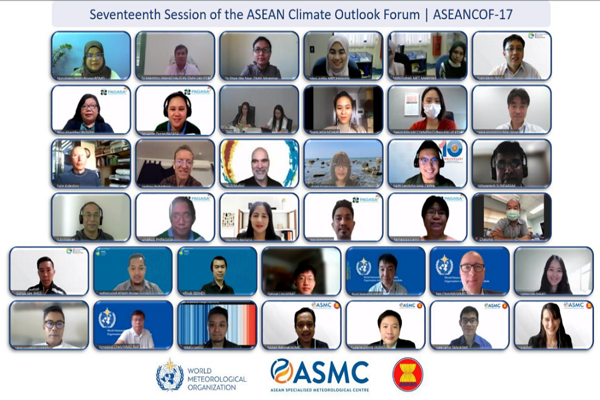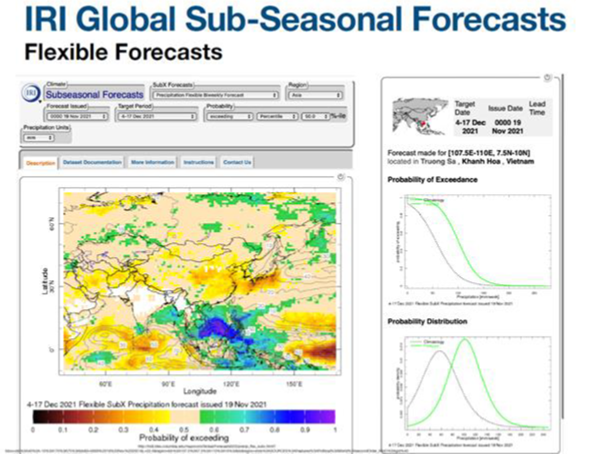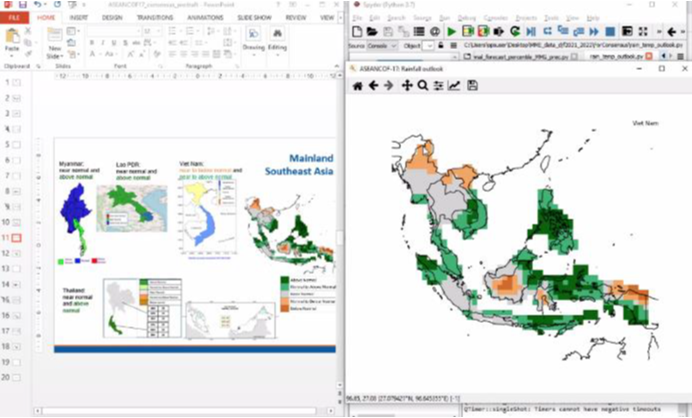31 MAR 2022
ASEANCOF
Summary of the Seventeenth Session of the ASEAN Climate Outlook Forum (Online, Singapore)

Participants in ASEANCOF-17.
Introduction
The Seventeenth Session of the ASEAN Climate Outlook Forum (ASEANCOF-17), coordinated by ASMC, took place online on 22 – 26 November 2021. Overall, there were more than 70 participants for ASEANCOF-17 from ASEAN National Meteorological and Hydrological Services (NMHSs), the World Meteorological Organization (WMO), ASEAN Secretariat (ASEC), Regional Integrated Multi-Hazard Early Warning System (RIMES), as well as other international organisations.
Day 1 and Day 2
The session started with opening remarks from the Head of the WMO Regional Office for Asia and the South-West Pacific (WMO RAP), Mr Benjamin Churchill and ASMC Deputy Director of Operations, Mr Raizan Rahmat. For the rest of the first day, representatives from NMHSs of ASEAN Member States and Global Producing Centres (GPCs) presented their outlook for December-January-February (DJF) 2021/2022. The presentations comprised of eight ASEAN NMHSs and five GPCs, which were Australia Bureau of Meteorology (BoM), Japan Meteorological Agency (JMA), APEC Climate Center (APCC) on behalf of WMO LRF, the European Centre for Medium-Range Weather Forecasts (ECMWF), and the UK Met Office.
The second day was an introductory session to NextGen, a new set of high-quality, flexible, and tailored seasonal climate forecasts created by IRI, Columbia University. This introductory session provided an opportunity to share with NMHSs one of the approaches
for developing objective outlooks and to gauge interest in setting up NextGen for the region. The session was led by Ángel Muñoz and Andrew Robertson from IRI, Columbia University.
Example of the Flexible Forecasts from IRI, Columbia University, a possible component of NextGen
Day 3 and Day 4
The focus of the third day was to arrive at the regional consensus for climate drivers, as well as the rainfall and temperature outlooks. Also on the third day were presentations from two of the three SEA RCC-Network nodes, with Mr Ryan Kang providing updates from the Long-Range Forecasting Node, and Mr Junie Ruiz providing updates from the Climate Monitoring Node. Dr Thea Turkington also provided updates from the ASEANCOF Working Group. During Dr Thea’s presentation, she highlighted ASEANCOF’s focus on training to support ASEAN NMHSs.
The final day comprised of the presentation of the consensus and the discussion session on seasonal outlooks and other climate services for Disaster Risk Reduction (DRR). This day was held as a webinar and marked the first time that an open call was made for ASEANCOF registration.
Screenshot of consensus discussion for the rainfall outlook - comparing the MME with the outlooks from the NMHSs in Mainland Southeast Asia
The session started with an interactive game led by Mr Tan Wee Leng, to highlight how interpretation of messages or information is not straightforward. Next, the climate review and consensus were presented. This was followed by a series of presentations from NMHSs on national outlooks for extreme events at seasonal and subseasonal timescales. The final section was a panel discussion on the use of climate services for DRR.
Conclusion
Overall, it was a successful ASEANCOF-17. The interest in the webinar suggested that future consensus report and discussion sessions on the final day should be open to a wider audience – at least when this is held in a virtual format. It is expected that the participant rate for this component would also increase as more people and user agencies become aware of ASEANCOF.
The ASEANCOF Consensus Statement for DJF 2021-2022 can be found here.